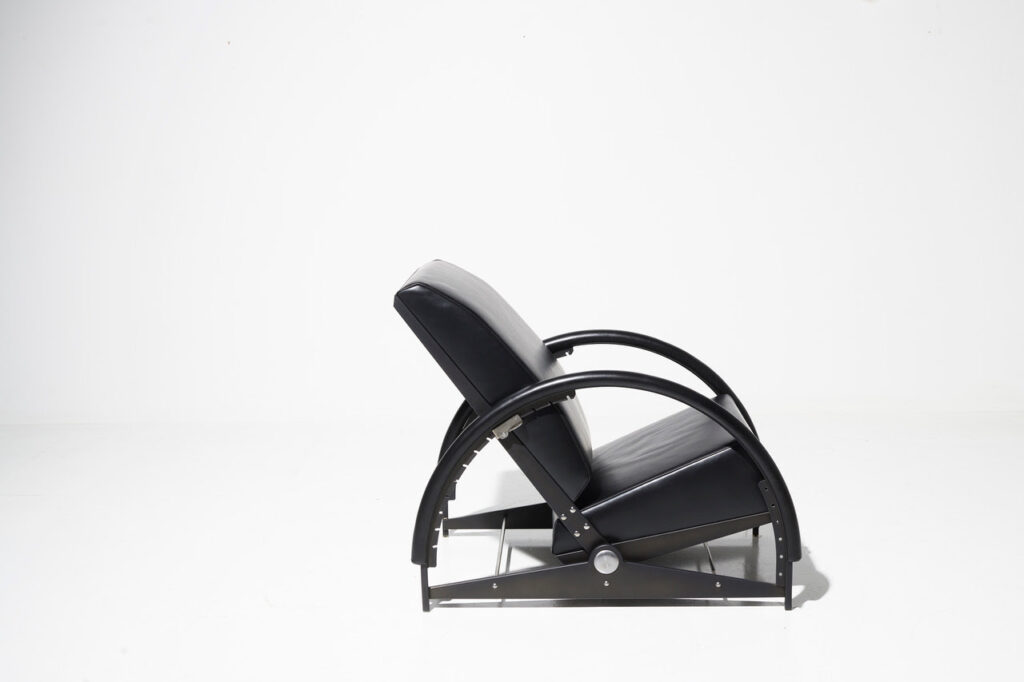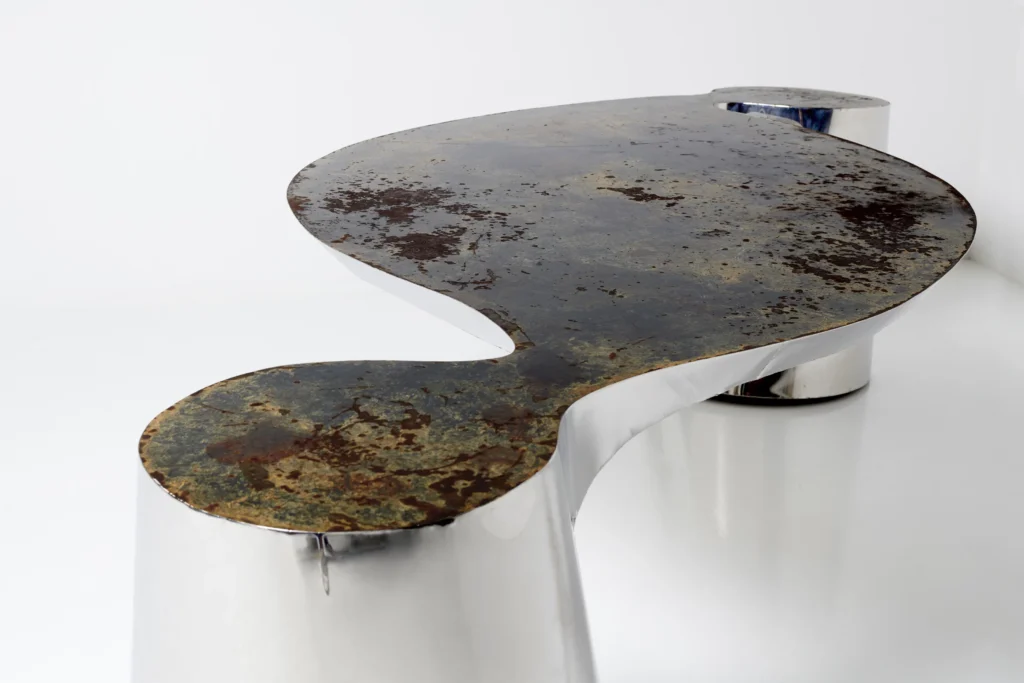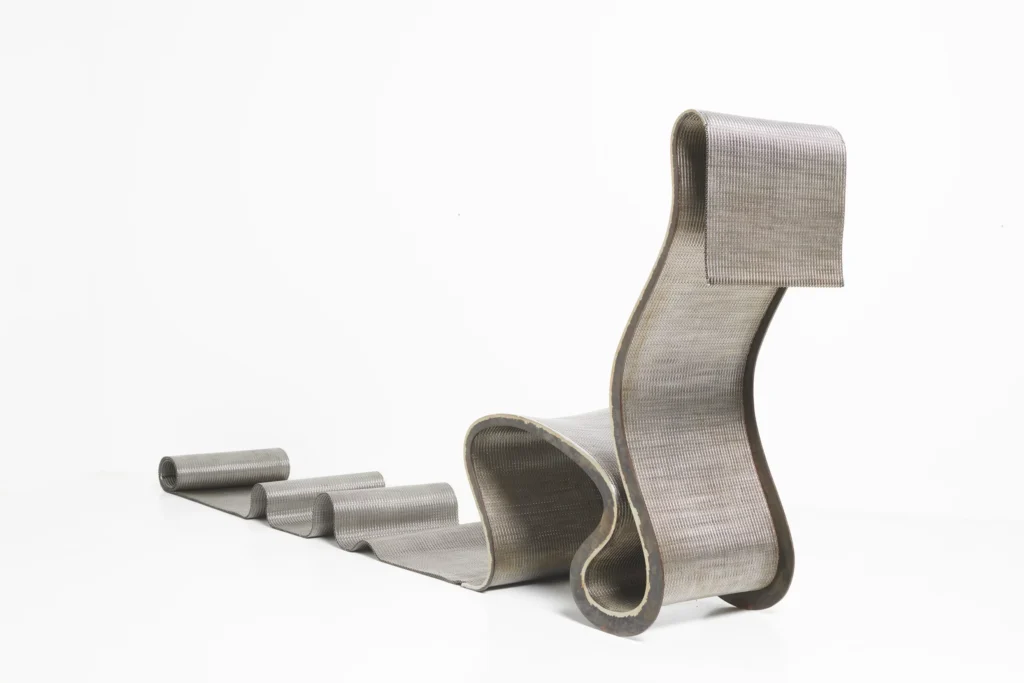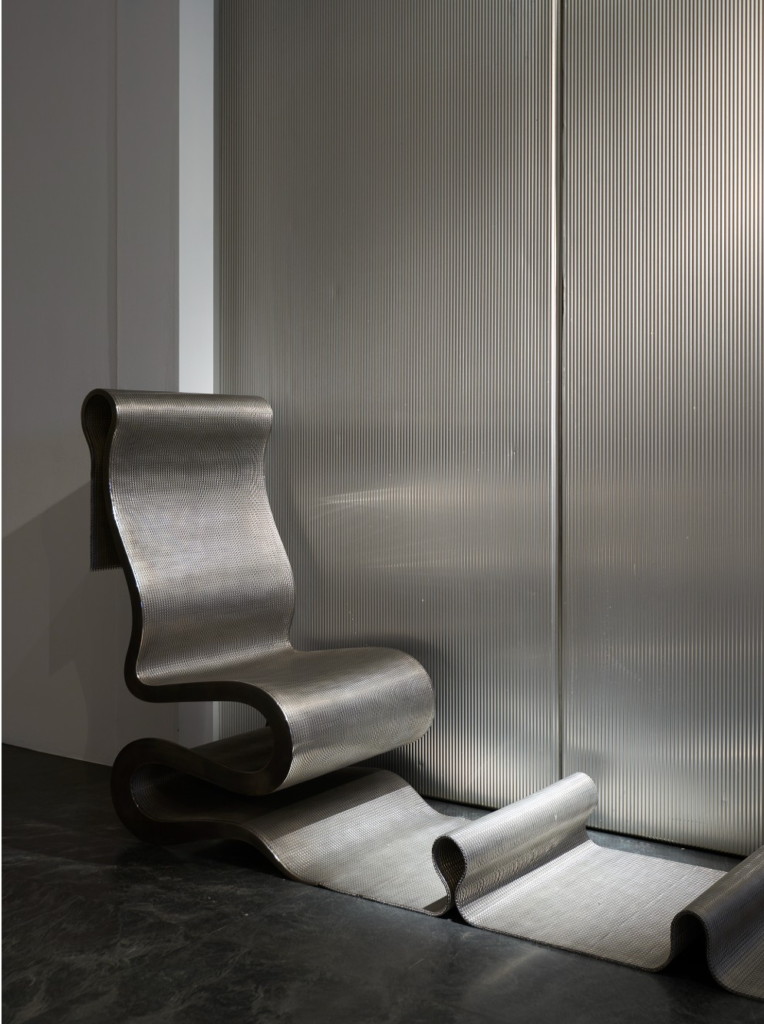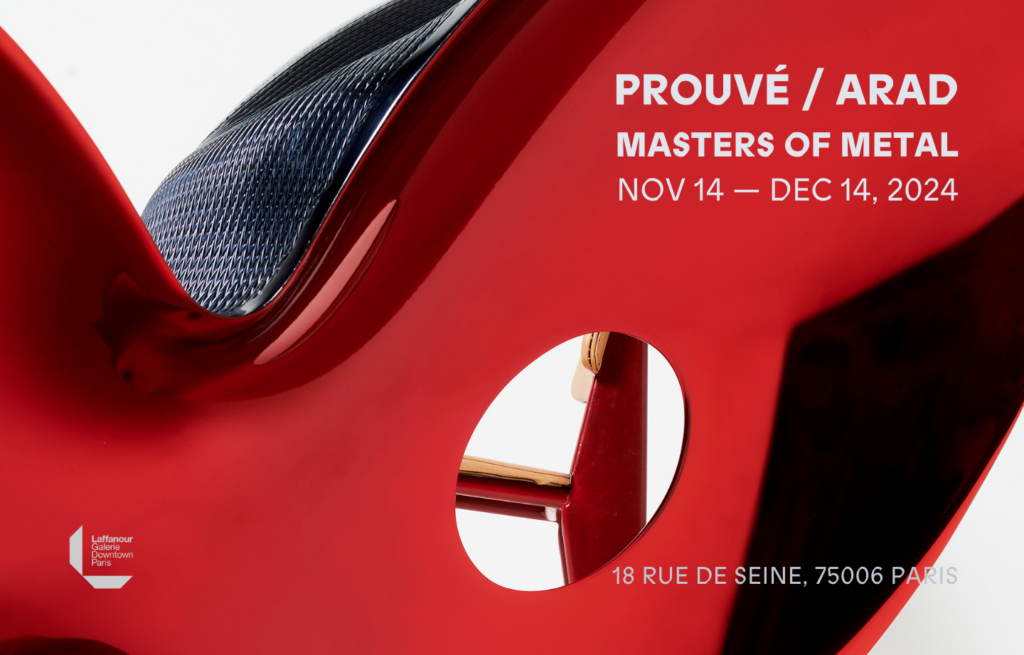
Ron Arad is holding a new exhibition, and this is one to celebrate, because it has been a long time since his furniture was placed at the center of a curated show. Titled Prouvé / Arad – Masters of Metal, it explores the connection between these two influential designers and celebrates the realization of one special chair called Twenty-Four, which is a tribute by Arad to Prouvé that marks the spiritual connection between the two of them. Both have been equally innovative, intellectual, and curious about technology and materials – particuarly metals. One was born at the turn of the century in France and triumphed French design of the postwar era by blending technology and industry, and the other was born in Israel in the early days of its statehood and forged an influential career as an industrial designer and educator in London starting in the early 80s, taking a leading role in the British avant-garde design movement.
“I almost didn’t get my diploma from London’s Architectural Association School of Architecture,” Arad recently told me, recalling his early introduction to Prouvé’s work. This was because while he was a student he had failed to return one particular book to the library, thus had to pay the fine in order to graduate in 1979. The book was Jean Prouvé: Prefabrication, Structures and Elements, which was published in 1971, the same year the construction of the Centre Pompidou—where Prouvé was the head of the competition’s jury—began. It was not until years later that Arad found the book hidden in his library. When he started flipping through the pages, he surprisingly discovered that in 1924, Prouvé created a chair, which never went into production, with an astonishing affinity to Arad’s own Rover Chair, which he created in 1981, the famed piece which was the point of departure for his prolific career in furniture design. While Arad’s example was fully constructed of readymades, reflecting his inspration from Marchel Duchampl’s found objets, Picassos’s Bull’s Head made of leather bicycle seat, and May Ray’s Object to Be Destroyed, Prouvé constructed his during his early years of experimentations with metal and long before moving his workshop to Maxéville, a suburb outside of Nancy in eastern France.
This spiritual and memorable moment eventually came to forge the central piece for the new exhibition, which opened last night at Galerie Downtown in Paris. Although it has never been put into a production, the chair is known from a sketch and an old black-and-white photograph of the prototype, which was reproduced in several books. Arad decided to reconstruct it based on that sketch. In his own typical humor, he inscribed on its back, “No one except maybe Prouvé has ever seen the back of this 2024 chair.”
We learn in the show that both Prouvé and Arad developed a fascination for metals and for making furniture made of metals. It was with metal furniture that their careers and language were shaped. Prouvé famously explored the possibilities of metal by inventing furniture in sheet steel, with which he invented new techniques, also using in his prefabricated buildings. Arad’s sculptural and bold furniture pieces, which he began fabricated in his studio and later in workshops in limited editions are also defined by the specific metals and various methods of fabrication, creating intriguing pieces while relying on computers and their manufacturing capabilities as much as on basic and traditional craftsmanship methods. Placing the blossoming careers of these two designers and their exquisite pieces in the spotlight allows us to examine the combination of processes, demonstrating the endless potential of metals to produce avant-garde designs that are part of the zeitgeist.
